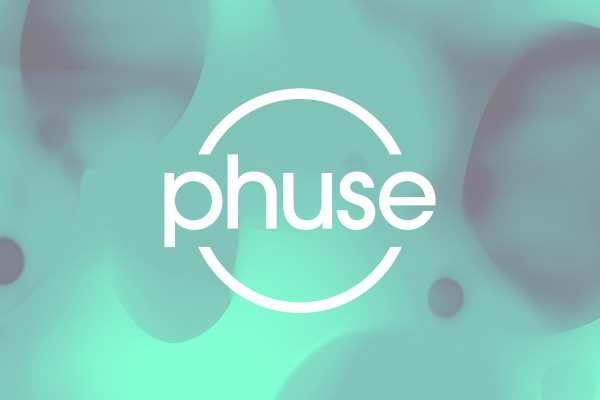2023 年 4 月 25 日
The number of documents required to report on clinical trial outcomes is staggering, and medical writing teams or biostatisticians must exert considerable effort to prepare this material.
One such document is the patient narrative. In a large trial, a pharmacovigilance medical writing team may have to author 200-400 patient narratives. Each of these can be several pages long and contain numerous data points. The average time to produce one narrative is up to 4 hours, which means a large study with 400 narratives can take up to 1,600 hours with little-to-no flexibility in project timelines.
The basics of patient narratives
So, what is a patient narrative? It’s a summary describing serious adverse events, death, or other significant events experienced by a patient during a clinical trial. A patient narrative should provide a clinically relevant, chronological account of the events experienced during or immediately following a clinical study.
According to ICH guidelines, patient narratives must be included with the clinical study report (CSR). The primary consumers of these documents are Health Authorities, Safety Teams, and Data Safety Monitoring Boards.
Where do patient narratives go?
The location of patient narratives often depends on the volume. If narratives are fewer in number, they may be placed in the text of the CSR. Regardless, they eventually make their way into Module 5 of the eCTD folder structure for submissions.

Major challenges in authoring multiple patient narratives
Each narrative tells an individual patient story with data unique to that patient, and consistency is critical. However, authoring dozens – if not hundreds – of consistent patient narratives containing dozens of patient-specific data points takes a tremendous amount of time, which can be a challenge when teams are operating on tight timelines.
Picture this: A team of 4 medical writers needs to produce 2000 patient narratives across multiple trials in a year. At 4 hours per document, that’s 8000 hours, and that breaks down to all four writers working full-time year-round.

What’s the risk of producing a high volume of patient narratives when deadlines are tight? It may result in a reduction in quality.
We’re only human, and that means mistakes are inevitable, regardless of the root cause. And that means the solution to reducing instances of human error is to automate through technology.
Sticking with tradition in producing patient narratives
Conventional medical writing typically starts with a tool like Microsoft Word by building a template that outlines the desired presentation of the patient narrative. But before a medical writing team can begin authoring a patient narrative, BioStats typically will need to create patient profiles first.
Traditionally, the data from patient profiles are then copied and pasted into a second document – the patient narrative – using the template created previously with Microsoft Word. This process entails a constant back and forth between BioStats and Medical Writing teams, generates additional work, creates opportunities to introduce errors, and adds to overall project timelines.
Another key element when producing hundreds of patient narratives across the study is consistency. Whether it’s the outline of the document, message development, presentation of information (i.e. dates), or formatting for all information throughout the patient narrative, consistency is essential. While human judgment is needed for key decision-making like determining medical relevance, consistency remains elusive in manual input.
A major component of creating a consistent, compliant patient narrative is the ability to apply standard formatting to text, tables, and data variables. This is critical when working with SDTM data as formatting can vary dramatically from study to domain to variable.
Prime examples of data variability include:
- fields in all caps
- fields that are abbreviated
- dates with various formats
The problem is that most medical writing teams don’t get to see any of the data until after database lock. That means it must be corrected manually, one instance at a time, in the Microsoft Word document.
Quality Control: spot checking patient narratives in advance
Early access to draft datasets also aids medical writing teams in Quality Control measures.
When medical writers can work directly with the SDTM data, they have a better understanding of how the patient narrative should look, as well as an opportunity to “spot check” a live preview of the sample output. In the event a data domain or variable is missing, the medical writer can flag the data point, alter the presentation, or alert the BioStats team to the issue in question.
This live preview helps quickly identify if there are anomalies or abnormalities in the SDTM data. The best-case scenario is that a piece of data is simply poorly formatted, which can be addressed and corrected.
The worst case is missing or incomplete data. In this case, medical writers will have acted as an additional layer of data QC, which is especially helpful in the instance of working with pre-database lock SDTM datasets.
This live preview of patient-specific values in the data allows the team to pinpoint the issue so that the team can trace back to the SDTM and source datasets to help identify the root cause.
The case for automation in medical writing
Organizations have begun to realize enormous gains due to the overall cost savings despite a dramatic uptick in productivity simply by adopting simple tech tools designed to assist in medical writing automation. These positive results can be attributed to five distinct reasons:
- Automation allows medical writers to produce hundreds of patient narratives with consistent presentation and layout, regardless of the variability in the underlying SDTM data. This helps improve overall quality and helps to ensure they are submission ready.
- Using SDTM data saves teams on average 63% more time versus traditional manual writing. Automating most steps for both writing and QC can dramatically reduce effort while improving turnaround times.
- It allows medical writers to work directly with data. This enables full traceability of content and opens the door for medical writing teams to work ahead before the trial has concluded.
- Using validated SDTM files from BioStats further ensures data accuracy and quality of narratives produced.
- With the right automation tools and procedures, the need for patient profiles can be eliminated completely.
Let’s go back to our team of 4 medical writers producing 2000 patient narratives from earlier and apply the time savings reported above. 8000 hours is now down to 2960.

Using SDTM data directly from BioStats to draft patient narratives has several tangible and intangible benefits, not the least of which is eliminating the need for patient profiles and giving time back to BioStats teams to do more constructive work.
Both Medical Writers and BioStats see this as a welcome trend. It eliminates many of the mundane and tedious steps in writing both patient profiles and patient narratives and empowers them to focus on relevance and key message development – areas where human intelligence is key.
Leverage the power of AI and automation to product patient narratives
法规文件撰写团队面临压力,需要在资源短缺的情况下缩短递交时间线以满足这些需求。CoAuthor™ generative AI software provides transparency, consistency, and collaboration to allow regulatory writing teams to accelerate the drafting and submission of quality and compliant regulatory documents, reducing timelines. Learn more about CoAuthor™ in our recent webinar below.

介绍 CoAuthor™: 面向法规撰写者的 Gen-AI 解决方案
Explore CoAuthor by Certara. Enhance regulatory writing with templates, structured content authoring, and secure, specialized generative AI for life sciences.

Product Director
Trevor Standish 是 Certara 产品总监,在制药、金融和营销等多个行业创建和实施创新软件产品方面拥有十多年的经验。他是一位以客户为中心的团队领导者,在产品 SDLC 管理、UI/UX 设计、人工智能/ML 系统和创新等多个领域拥有专业知识。
Trevor 在管理软件开发生命周期、确定全球产品战略和路线图以及领导团队向敏捷方法过渡方面拥有丰富的经验。他曾在各种行业会议上发表演讲,协助全球销售团队,并在高管圆桌会议上发言。
他曾在 Certara、Concentric、Synchrogenix 和 Fifth Third Bank Corp 等公司任职,展现了出色的领导能力,管理产品组合,并制定了战略性产品路线图。
Contact the Certara team






